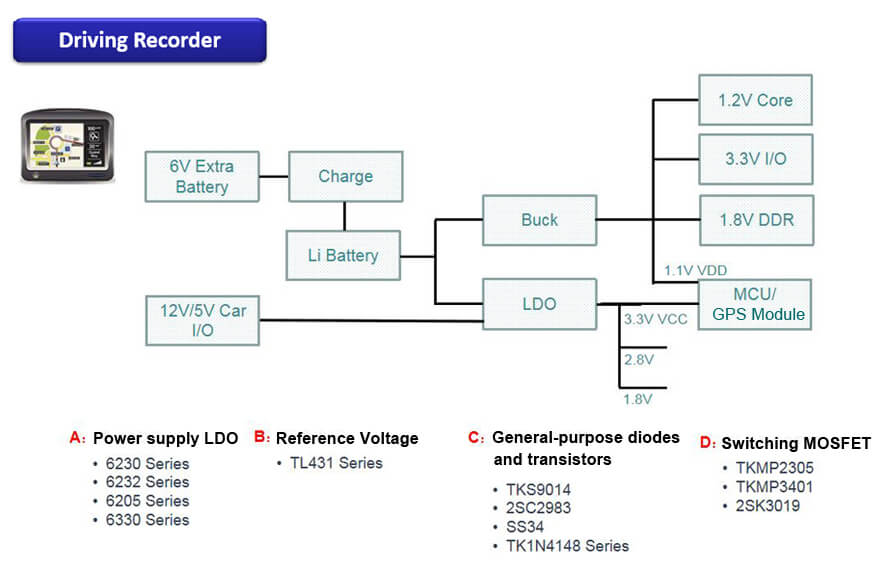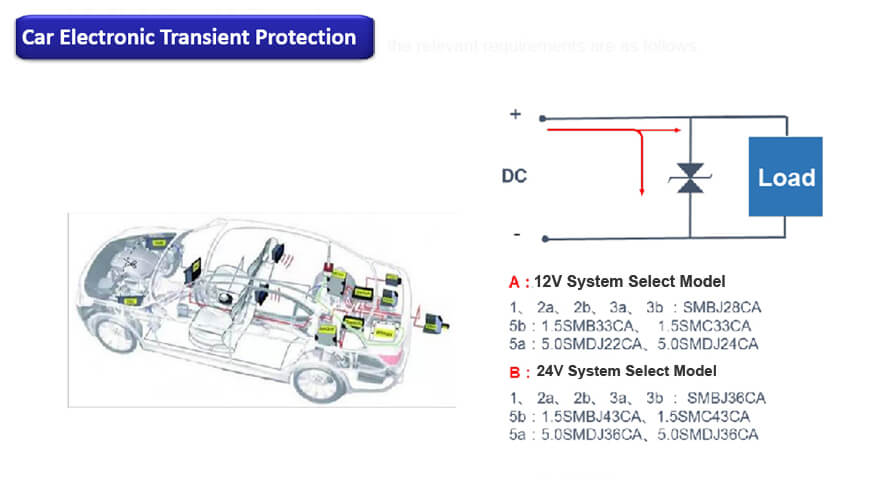B: ESD: SOT-23 Package series: 5V/24V/36V; SOT-23-6L Package:5V; SOT-323 Package:5V; SOD-323 Package series: 3V3/5V/15V/24V/36V; SOD-523 Package series: 24V/36V
● EPS Electric Power Assist System
Recommended Part Numbers:
A: MOSFETs: PDFN5*6
B: TVS: SMCJ26CA
● Taillights
Recommended Part Numbers:
B: Transistor: TKMMBT3904, MMBTA06, MMBTA55; BCP56-10, BCP53-10; BC857B, BC817-40, BC807-40
C: Zener Diode: MMSZ5231B/39B, BZX84C5V1/16
D: TVS: P4SMAJ43CA/28CA, P6SMBJ43CA/28CA
E: ESD: TESDB24T2B, TESDB05D3



